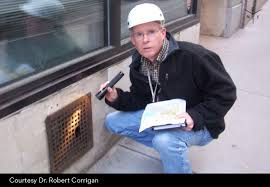Noted Rodentologist Offers Rat Management Advice
- Marina Streznewski
- Jun 11, 2017
- 2 min read

On Saturday, June 10, more than 50 people from across the District of Columbia gathered in Foggy Bottom to hear from noted rodentologist Bobby Corrigan. Corrigan, who has a Ph.D. in urban rodentology from Purdue University, discussed rat biology, habits, and reproductive cycles, debunking many myths along the way.
“There has never been a Norway rat weighed at more than slightly over one pound,” he said. “When threatened, rats puff up their fur to appear larger than they really are.”
And while we’re debunking myths – Norway rats originated in Mongolia, not Norway.
Corrigan offered useful tips for determining if there are rats on your property or in your building. He advised looking in corners and shadows, along lines (like walls), and in warm places. Signs of rodents include droppings, sebum stains (which appear greasy), the odor of rat urine, evidence of gnawing, and burrows.
He reiterated the importance of cleanliness in preventing rat infestations. In describing effective citywide rat management, he shared the following list of prevention factors:
30% refuse stream management
25% pest exclusion programs (pest-proofing)
25% proactive surveillance and community outreach
<20% quality, carefully-designed, and strategically placed poison, baits, and traps
Corrigan described some of the effective rat mitigation substances available. The District Department of Health Rodent & Vector Control Division uses a powder that is injected into rat burrows; the powder is an anti-coagulant that kills rats within a few days. However, the powder is a restricted use pesticide (RUP), which means it is only available to certified and licensed pest controllers.
Snap traps are cheap and effective when placed along already-travelled rat paths. Feral cats are not particularly effective, according to research by Jamie Childs of Yale University and others. ContraPest, which causes the eggs in the female rat to dry up prematurely, is gaining favor as a non-toxic method; however, it takes months to show results.
Dry ice has proven very effective. It is placed in rat burrows, which are then covered. As it melts, it emits CO2, which results in rat deaths in minutes. Unfortunately, the US Environmental Protection Agency (EPA) has forbidden licensed pest controllers to use dry ice pending further study. Corrigan noted that the EPA has received a lot of data that support dry ice as an effective, inexpensive, and humane rodenticide.
The bottom line, according to Corrigan, is that everybody has a responsibility to keep their property clean, to eliminate anything that could harbor rats, and to handle trash and recycling according to DC regulations.



